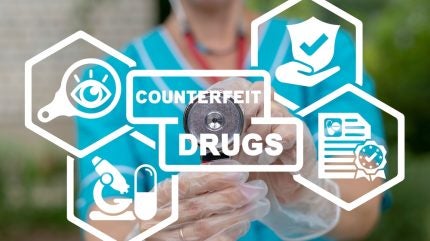
This issue is driven by several factors, including the high cost of proprietary medications, the increasing use of the internet for drug sales, the minimal legal risks associated with counterfeiting, and the relative ease of producing counterfeits. This global crisis generates a staggering $200 to $432 billion annually for counterfeiters and is responsible for over 1,000,000 preventable deaths each year. In response, pharmaceutical companies have implemented measures like tracking systems and tamper-evident packaging, but these methods have significant limitations. This article will explore the current landscape of counterfeit pharmaceuticals, examine existing solutions to combat the issue, and highlight the need for innovative approaches such as on-dose authentication to address existing gaps.
The counterfeit market thrives particularly in developing countries, where traceability is limited, and price sensitivity is high. For example, in Africa, counterfeiters often target life-saving medications like antimalarials and AIDS treatments. This is facilitated by the common practice of selling medications in open-air markets, where pills are frequently sold loosely or in easily replicable packaging. Alarmingly, Africa accounts for nearly half of all global incidents of counterfeit medicines.
However, the threat is not confined to developing nations. In developed markets, high drug consumption combined with increasing reliance on online pharmacies exacerbate the problem. The Covid-19 pandemic caused a surge in online pharmacy use, including unlicensed pharmacies, and the WHO reported that 50% of online pharmacies concealing their physical addresses were found to be distributing counterfeit drugs.
Counterfeiters remain undeterred by the minimal legal risks associated with their operations. In California, for example, a counterfeit drug offense can result in either a misdemeanor or felony charge, depending on the circumstances. Misdemeanors may lead to a jail sentence of up to six months and a fine of up to $1,000, while penalties for felony drug offenses vary in severity.
Once a product is outside of the supply chain and no longer tracked, verification often relies on trust in the seller rather than a more robust, systematic check. This creates the opportunity for counterfeit and diverted products to enter the market undetected through reselling and redistribution. Experienced counterfeiters can repurpose authentic packaging and fill them with counterfeit or substandard drug products, then resell to end users. Counterfeiters have become adept at replicating the unique identifiers that track and trace systems rely on, such as barcodes or serial numbers, or holograms and RFID tags—which are found on the drug product’s packaging, not on the product itself.
Efforts by federal regulators, international task forces, NGOs, and pharmaceutical manufacturers to combat counterfeiters include implementing tracking systems, tamper-evident packaging, and random assaying. Yet, each method has its limitations. For instance, tracking systems can add eight to ten percent to manufacturing costs, with the United States and European serialization mandates costing billions of dollars and euros respectively. While these systems provide end-to-end visibility within the supply chain, their effectiveness diminishes significantly once products exit the formal supply chain and prior to being dispensed to end users.

On-dose authentication
Given the current limitations of tracking systems and packaging solutions, the pharmaceutical industry must consider on-dose authentication. One effective method involves the use of tracers or taggants, also known as physical chemical identifiers (PCIDs), which do not alter the drug’s identity, strength, quality, purity, potency, or bioavailability. A PCID is defined by the US FDA as “a substance or combination of substances possessing a unique physical or chemical property that unequivocally identifies and authenticates a drug product or dosage form.” Examples of PCIDs include inks, pigments, flavors, and molecular taggants, which can be incorporated into or on the coating of solid oral dosage form drugs. The presence or absence of the desired PCID allows for verification of a drug’s authenticity. When developing PCIDs, it is crucial for manufacturers to ensure that identification and authentication methods are easily accessible to patients worldwide.
San Francisco-based Micro-Tracers, Inc. has developed a novel on-dose authentication solution called SECURtracers. These food- and pharmaceutical-grade tracer particles, which can be applied directly to the coatings of pills and capsules, fluoresce under UV light, allowing for immediate identification of a counterfeit drug. Each SECURtracer particle is also micro-engraved with over 10 or more letters, numbers, and symbols, offering virtually limitless coding possibilities. This advanced technology enables ‘on-the-spot’ verification of the dose using a UV black light and handheld microscope, even when the drug is separated from its original packaging, significantly enhancing security and trust in pharmaceutical products.
While the battle against counterfeit pharmaceuticals is complex and ongoing, innovations like on-dose authentication represent a promising advancement in protecting patients and ensuring the integrity of the pharmaceutical supply chain. By adopting these solutions, manufacturers can significantly reduce liabilities, prevent revenue loss, protect their brands, and most importantly, save lives.
Stay ahead of the curve and safeguard the future of healthcare—make the transition to on-dose authentication today!
The second article in this series will explore the US FDA’s critical recognition of the need for Physical Chemical Identifiers (PCIDs) and provide an analysis of how SECURtracers meet these criteria. Click here to read it.


